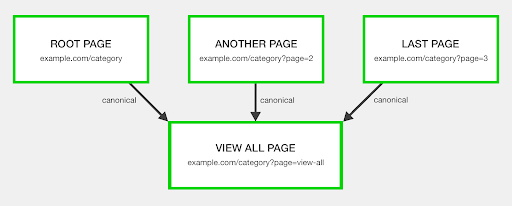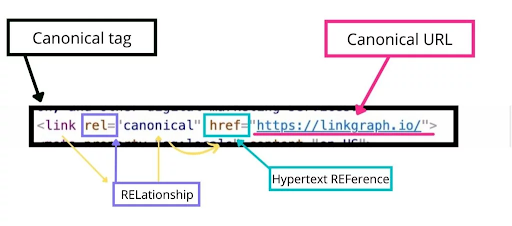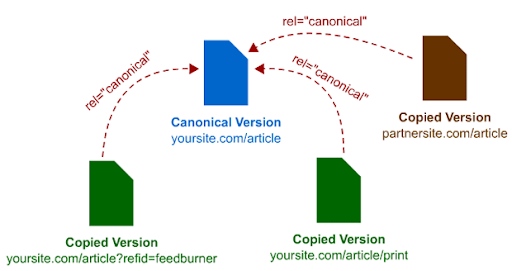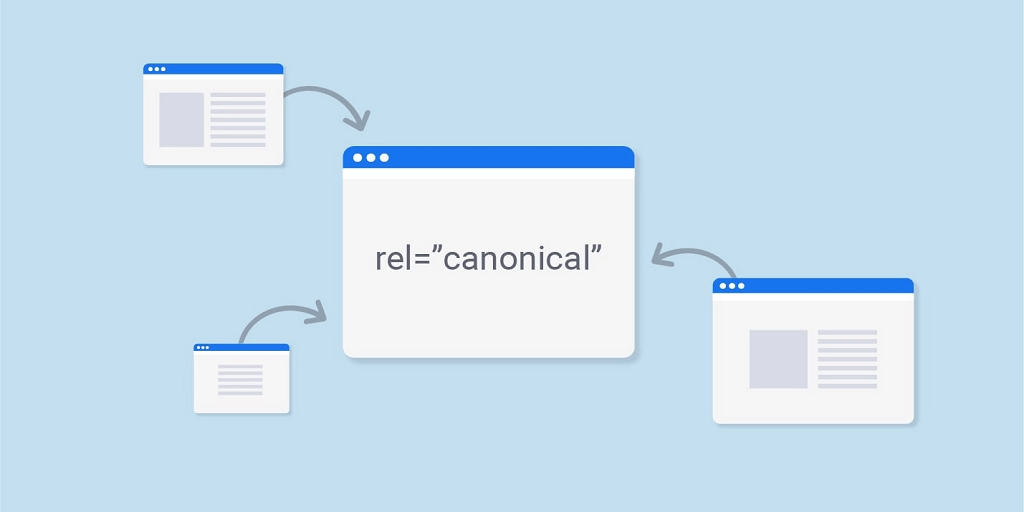A canonical tag is an HTML tag that specifies to search engines that a master copy of the page exists. Canonical tags have been a companion to many websites for a long time and are extremely useful in determining the original version.
Let’s dig into the outclass classification of this tag to explore more;
Why use Canonical Tags? Do they Really Matter?

Using canonical tags on your website can avoid duplicate content appearing on multiple URL
Suppose the content present on your website is the same under different URLs. In that case, the crawler will find out that pages are duplicated, and it can index anyone without knowing which one is needed to appear in Search engine results, missing the unique content. It may affect your crawl budget.
Moreover, causing various SEO problems, such as duplication, may lower your rank in search engines.
The crawler doesn’t possess any characteristics to distinguish between an original URL and a duplicate one. Using Canonical tag doesn’t mean instructing the crawler; however, providing a hint.
Search engines work differently, as it takes blind notice of something that avoids different URLs. By adding canonical tags, you tell google that ignore these linked copies and move on to the original Canonical Tag, as usually there are 4 to 5 copies linking to the Canonical tag.
SEO Canonicalization
SEO Canonicalization refers to the method that helps avoid duplicate content issues and handles the indexing of URLs. Using Canonicals in SEO creates a significant impact on search engine ranking.
You may not be aware of the fact that duplicate content has a bad impact on SEO and can be perceived by running a crawler.
Canonical Tags look like What?

Canonical tags look like a simple and consistent arrangement and are set down within a webpage’s <head> section.
- <link rel=“canonical” href=“https://example.com/sample-page/” />
- Link rel= ‘canonical’: the URL in this tag is the master version of this page.
- href=’ https://example.com/sample-page/: this link shows the canonical version.
This may sound boring, but it’s extensively knowledgeable. So, keep reading to acknowledge its uses.
Uses Of Canonical Tags

Sometimes people bother about whether they should use canonical tags or not; however, no duplicate content may exist on their website. This is a big question in itself, knowing that do duplicate content exists on every website?
Let’s take a look at some common aspects of using canonical tags:
- The home page can be accessed from different URLs ( for instance, www.domain.com, domain.com, and many more)
- URL rewriting can cause the server to consider One ID and acknowledge address variations.
- There are different HTTPS variants of the site.
- The URL is still accessible under an HTTP version without SSL encryption.
- IDS ( as session IDs) are accustomed that don’t change the content
- Pages can be accessible with or without crawling Slashes and considering case sensitivity.
Best Practices Of A Canonical Tag
Many people become confused when adding canonical tags as they look complicated. It’s very much straightforward to follow best practices when applying it. Since Canonicals indicates google to avoid the page and move on to the canonical URL, you can quickly spike up your SEO sites.
- ‘Hreflang’ And Canonical Tags
If a website adds ‘hreflang,’ the URLs should either be mentioned with a canonical tag or without it. If both ‘hreflang’ and canonical tags are inserted, google may receive conflicting signals. Whereas the ‘hreflang’ tag exhibits another language version, the canonical tag would make this seem like an original URL.
- ‘Pagination’ And Canonical Tags
When paginating websites, use rel= ‘next’ and rel=’prev,’ then each page cites to itself by canonical, or there should be a ‘view-all’ page, where all the products can be evident in one overview. This ensures that search engine crawlers can also detect URLs from paginated pages.
- ‘Noindex’ and Canonical Tags
When using the noindex tag, google search central can indicate to Google that a URL should not be indexed. When a canonical tag cites this page, google receives indecipherable signals, as Canonical URL is a related page a Google search central wants to be indexed.
Google search central should decide between a canonical and noindex tag.
Other than these, there are some things that you need to make sure that your canonical URL is workable. Sometimes it shows the 404 error or 200 status code.
Moreover, the canonical tag always contains the full URL. A URL must include these parts:
- The https://
- The www (if it’s are part of your preferred domain)
- Your domain name
- The .com part.
They are called as absolute URLs. URLs that only comprise the part that comes following the ‘.com’ are called out relative URLs and aren’t specified when google reads your canonical tag. If you don’t insert an absolute URL, google will overlook the tag.
Wondering how to add canonical tags to pages? Just read on
Adding Canonical Tags To Pages
- Insert Link Tags within <Head> Of HTML
The most acknowledged way to insert canonical tags in pages is by inserting a <link> tag within the <head> of the HTML document.
For instance:
<link rel=”canonical” href=”https://www.example.com/article1/” />
- Incorporate A Canonical HTTP Response Header
No matter whether they are used less, search engine crawlers also encourage the inclusion of canonical directives in HTTP response headers.
The result often seems best when the URL in question is not an HTML file or any other file.
Canonical HTTP response headers should be inserted, as in this case, from Google’s Canonical Guidelines
Link: rel=”canonical” href=”https://example.com/page-b” />
- Use XML sitemaps To Indicate Canonical URLs
As per their guidelines, Google considers all URLs found in XML sitemaps as canonical; for large webpages, this is the simplest way to specify approved content for indexing.
Google specifically indicates excluding non-canonical URLs from the index as best practice, so it’s essential to check that your sitemaps should not include duplicate URLs.
Last but not least, adding canonical tags to pages mainly depend upon what type of site you are working on. So, if it is a WordPress site or HubSpot, best SEO plugins for adding canonicals are the following:
- Yoast SEO
- The SEO Framework
- All in one SEO pack
Read Also

